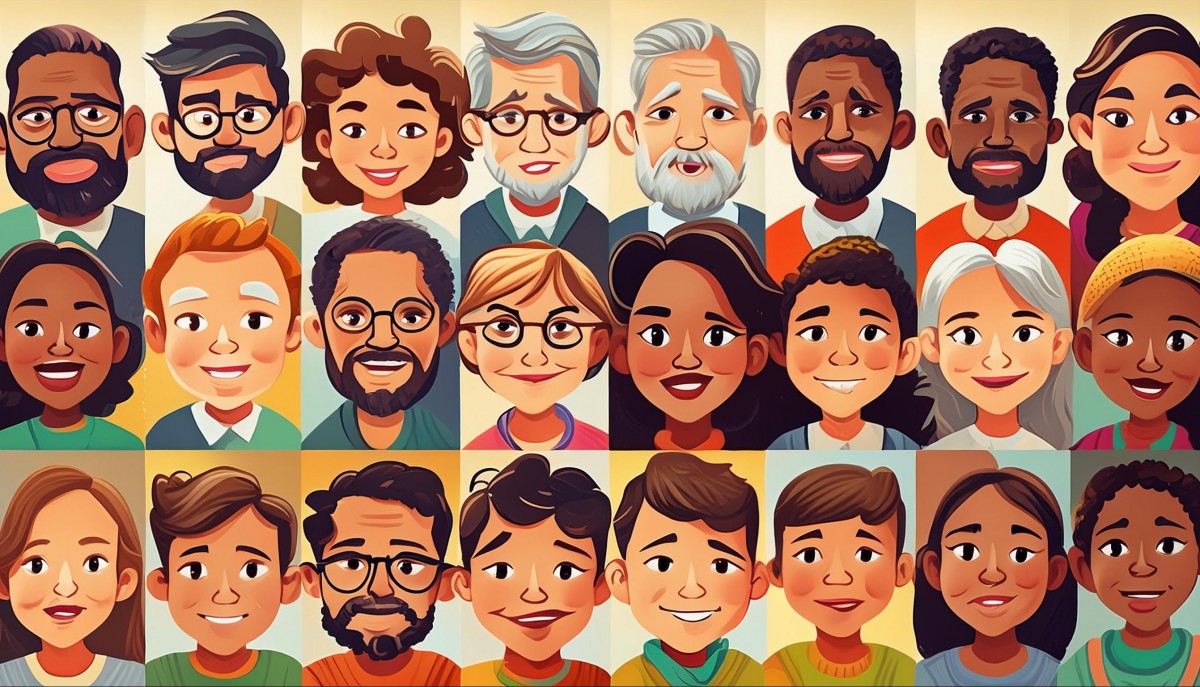The Power of Calmness - Understanding Emotions
Our ability to understand and manage our emotions is one of the principal ideas of Chan-Dao for achieving self-wisdom. This blog focuses on understanding what emotions are and how our body and mind are affected. By taking the step to understand emotions, we begin the journey to develop ‘calmness’.

Emotions
An emotion is a physical sensation resulting from a chemical reaction in the body and can be stimulated by the mind or external factors.
Let’s break this down into a few key requirements:
-
There needs to be a physical sensation. For example, we describe these physical sensations as feelings of hunger, physical pain from injury, pain in the heart or chest, euphoria from happiness, etc.
-
The physical sensation must result from a chemical reaction in the body. This means your body stores, creates, and releases chemicals for every emotion you feel.
-
The chemicals responsible for your emotions are stimulated by your mind (from perceptions and in response to your environment).
In other words, if any of these requirements are not met then it is not an emotion experienced in the 'normal sense'. It is instead classified as something else beyond the scope of this article, for example, it could be a deception or a mental disorder.
To distinguish different types of emotions, let's also break down emotions into two components:
-
Emotional State. This is the physical sensation of the emotion in your body and mind.
-
Emoting. This is the physical act of communicating how one feels.
Understanding emotions in this way is very useful. For example, cultures and societal groups may have different mannerisms in expressing emotions. When travelling or moving to a foreign country, you can adapt more quickly by copying how others emote.
Some people hide how they feel (i.e. they hide the emotional state they are experiencing) by acting and communicating with another emotion (i.e. emoting). For example, a poker player might be feeling very nervous (or excited) by the situation during a card game, but emote calmness to fool the competition.
Others might hide their disappointment or feelings of sadness, anger, or embarrassment in fear of how others would respond.
Basic Emotions

With our understanding of emotions, let’s explore some basic emotions by observing babies and infants.
In the first year, a baby can experience joy, sadness, happiness, anger, comfort, discomfort, like, and dislike. The baby will innately know to cry in order to communicate any negative emotional states experienced.
The baby will initially experiment with different facial features and learn facial features from those around. This helps the baby communicate how it feels to its caregivers. This is why sometimes the facial features of the baby may seem random, and not match how the baby feels (according to what most people would expect).
Other basic emotions are not so obvious. These are: hungry, thirsty, full (from eating or drinking liquids), tired, alert, the need to urinate, nausea, and the need to poop.
All of these basic emotions help babies to communicate and survive.
Complex Emotions
As we grow older, we develop more complicated emotions to help us survive in our social environment.
Part of this emotional complexity comes from evolved emotional states, and part of it comes from evolved emoting.
Evolved emotional states would include emotions such as feeling confused, rejected, excited, euphoric, concupiscent, fearful, horrified, disturbed, loss, peaceful, bored, physically hurt, emotionally hurt, fearful, enraged, lonely, depressed, anxious, stressed, illness, connected, satisfied, vexed, hot, and cold. There are many more complex emotional states not listed here. A baby may also have some of these emotional states but not likely to the complexity that is developed later on in life.
Evolved emoting comes from learning how to use the physical body to convey an emotion in a social environment. This can include many different muscles in the face as well as using our body and arms/legs and also includes the voice. Different cultures and social groups may use completely different muscles for emoting. For example, when one is confused, one may shrug their shoulders, scratch their head, say ‘huh?’ or ‘what?’, raise one cheek, tense up one eye, etc. We learn this by being around others, watching shows, etc.
Emotional States and Sense Perceptions
We have contemplated emotions in a structured way, separating emotions into Emotional States and Emoting, and talked about how emotions evolve into complex feelings in a social environment.
We can now confidently deduce that Emotional States are part of our basic Sense-Perceptions. That is, in addition to being able to touch, taste, smell, hear, and feel, we also experience many Emotional States that have been with us since our conception in the womb.
This also means that our complex and abstract layers of perceptions must include these emotional states, further complicating our understanding of things.
For now we will keep this idea as a placeholder. In the future, we explore it along with the ideas of the subconscious and the ego-self.
Why Emotions are Difficult to Deal With
We may act upon our emotions and regret things we do or say. Why do we struggle with our emotions?
Firstly, it is important to remind ourselves that the Emotional States we feel are triggered by an Emotional Chemical. The stronger the emotional chemical, the greater the sensation of that feeling, and the increased likelihood of acting irrationally.
Consider the loss of someone close to you. This loss causes you to feel sad along with a terrible pain in your chest. In time, it becomes depression and you may lose your appetite or motivation to survive. Does it make sense to starve yourself and ruin your health? Most likely not! However, the strong feeling of sadness makes it difficult to motivate yourself to be healthy.
Some emotions will cause you to act out immediately. For example, you are in a rush for a work meeting and fear that you may lose your job for being late. At the same time, you urgently need to use the washroom. The feeling of defecating is so strong that you decide to take a detour and accept being late for the meeting.
Other emotions such as anger, hate, and jealousy may cause you to act without considering the consequences. There are plenty of examples of people who resort to physical violence, racism, theft, and bullying in an attempt to satisfy these emotions.
Some underlying emotions such as anxiety are often caused by past trauma. Many people are not aware of this anxiety or are unable to face it, resulting in smoking, alcohol, or self-abuse. The relief is temporary and when the anxiety returns, they repeat in self-abuse.
Even positive emotions can lead to problems. Joy and excitement can be positive temporarily, but when those feelings dissipate, one may then feel boredom and even depression. This may lead one to make harmful or risky decisions for oneself to seek euphoria, such as gambling, drugs, and alcohol abuse.
The main point here is that the feeling of Emotional States can be very strong and override your thinking processes, resulting in a lapse of judgement.
Why Do We Have Emotions?
Emotions exist mainly for 3 reasons:
- To communicate
- To survive
- To integrate
Communicate
Babies emote as a means to communicate with their caregiver to help with their needs. As we get older, our emotions help us to additionally fit into society as a means to learn and working together.
Consider a child who appears lazy and unmotivated to do well in school. This may cause the parent to worry and become angry, resulting in punishment for the child. What is actually happening is that society is expecting that child the grow up one day and join the workforce and contribute in some way. In exchange, society will reward that child with financial security. Worry in this case, helps motivate the parent to look after the child’s future interests.
Society and social interactions are complex. Culture and history play a large role in how societies have developed. Actions that cause a negative experience for others are often evolved into crime, law, and the idea of personal rights.
Emotions have helped us to communicate with others when we feel our rights have been violated.
A passerby may justify that taking a few crops from a farm is okay because ‘the farmer has so many and won’t mind losing a few’, but to the farmer, that person is stealing and taking advantage of the hard work put into farming.
Another example could be your boss taking credit for your hard work. Is that okay? Probably not.
Anger, sense of loss, and/or rights violation may ensue, leading to aggressive and violent action.
Emotions also help us to communicate with ourselves. This is part of a larger discussion involving the subconscious which we will explore another time.
Survive
Emotions help to ensure our survival and in other words, it is part of our genetic make up.
If you did not have the emotion of feeling hungry, you would starve to death because there is no particular desire to eat. The same would be true for drinking water or liquids.
On the other hand, if you eat too much, you will feel nauseous. This is the body’s protection mechanism to ensure you do not overstuff your stomach and cause problems.
Once you eat your body will digest the food. If it doesn’t like what you put in it (for example moldy bread or items that are not actually food), your stomach will complain and force you to eject the material by making you feel nausea and forcing you to vomit.
When you process the food, the waste needs to come out, or else your body will become stuffed and waste will fester. So your body will now nag you and force you to defecate.
With the nutrients in your bloodstream, your body will want to heal tired muscles and joints or grow muscle and bone. The best way to do this is to make you experience tiredness as a means to make you slow down, rest, and sleep.
There are many more emotions related to survival for your body. Take the time to think this through and discover more.
Integrate
As a human species, we have to learn how to survive together and this requires us to integrate into a larger system that includes complex social behaviour.
We’ve gotten to this point in the universe due to our emotional needs to belong, to work together, to share stories, knowledge, and wisdom, to develop technology, and to help each other through social groups and government.
Our DNA does not want us to live life alone, and the emotion of loneliness and insecurity will build up, and motivate us to find a partner, have a family, and make friends. In other words, we are social creatures. Otherwise, in time, loneliness will build up and make us feel anxious, stressed, abandoned, rejected, sad and depressed.
How to Calm Down Temporarily
To deal with our emotions, we need to start in a calmer state. However, experiencing emotional states makes our lives very difficult because the situations we find ourselves in, or the rumination afterwards, will continue to release emotional chemicals.
You can find many techniques on the Internet for calming down temporarily. Here are a few ideas:
- Focus on breathing. Breathing will naturally relax you, so take a few minutes to breathe more fully to relax.
- Remove yourself from the environment. If something in your environment is creating unwanted emotional states, try to find a new environment where you can take a moment to relax.
- Listen to music. Distract your mind by listening to music that helps you relax. You can try meditative, trance, and/or peaceful music.
- Meditate. Attempting meditation when you are not calm is not easy, and yet doing so can provide the quickest path to calmness. Practice often so that you can do it in a time of need.
- Try moving meditation. Moving meditation is anything that you can do on your own that allows you to distract your mind from whatever it is that is bothering you. This can be a simple chore such as washing dishes, going for a walk, practicing qigong, etc.
The Skill of Calmness
The Skill of Calmness is your ability to preemptively prevent Emotional States from arising. It is a long-term skill that when developed, will give you a trusty and powerful weapon to maintain calm wherever you are and whatever you experience.
The Skill of Calmness implies:
- It has value,
- It can be attained,
- It can be improved
The Skill of Calmness has value because it supports rational thinking. Who would want to lash out at others and hurt them when they get angry? Causing suffering to others will always come back to cause suffering for yourself.
How often do we see violence in the news that could easily have been avoided? A few years ago, I read a news article involving a physical fight between two people involved in a traffic incident. One driver decided to turn left even though the traffic had not cleared, resulting in blocking the intersection. The other driver wanted to go through and could not, and became so angry that they both got out of their cars. They started to yell at each other, which escalated to threats and eventually became a physical fight where one of them died. If any one of them had the Skill of Calmness, no one would have died, and they would have been able to reason it out as a lesson learned. Instead, one dies with likely family who must now suffer, while the murderer must go to jail and contemplate the consequences.
If we had the Skill of Calmness, we would be more accepting of others, be less reactionary, have clearer judgement, and integrate with others in a more positive and supportive way, thereby fostering peace in society.
The Skill of Calmness can be attained and improved. When you first achieve some level of skill, you will find yourself less reactive, and the emotional feelings (i.e. the resulting chemicals released in your body) are reduced.
The chemical release of emotions is your body’s way of overriding your consciousness to react immediately to your environment. We mentioned many reasons our body does this earlier, and we know it’s not always a good thing.
How to Develop Calmness
Here are a few ways to develop the Skill of Calmness:
- Practice acceptance scenarios
- Practice daily silent meditation
- Practice awareness of arising emotional states
Practice Acceptance Scenarios
Many emotions arise unexpectedly and cause an immediate and strong chemical release, which is difficult to be aware of and manage.
For example, you may be applying for a job and you expect to get it because of your experience and credentials. However, if you are unexpectedly not hired, you may feel disappointed or sad.
By preparing ahead of time, you can go through scenarios of getting that job or not getting that job, and not only accept the result but also plan out the next steps. In this way, if you do not get the job you will not be fixated on the result but rather on how to get the next one.
The disadvantage of this technique is that it is too difficult to think of and remember every possible scenario in life! So when life brings unexpected events, you may find yourself unprepared and your emotions swinging from high to low and low to high.
Practice Daily Silent Meditation
Silent meditation is not an easy skill to master, however, even a novice practicing for a few minutes a day will benefit greatly in many ways.
This form of meditation is classically presented in a lotus sitting position and may be practiced in various seated, standing, and other comfortable positions. The aim of this practice is to develop calmness by unburdening the mind from day-to-day stresses, anxiety, and worries.
The reason why practicing meditation helps with the Skill of Calmness is that it will unburden your mind and help you to be more present and aware of the emotional states that you experience.
Proper practice of Silent Meditation is also practicing the ability to physically relax your body.
And when you are more present, you will become less reactive to the events arising around you.
Learn more about Silent Meditation at stqitoronto.com > resources > zen, or click here:
https://www.stqitoronto.com/index.php/s/resourceszen
Practice Awareness of Arising Emotional States
By the time you experience an emotional state, such as anger, sadness, and excitement, the chemicals are already released in your body and will not clear out very quickly. Ideally, you would want your body to stop releasing more and sooner so that you can calm down more quickly.
The key is to become more aware of emotional states when they trigger. For example, you may find yourself feeling sad, but then realize it was triggered by one or more events that happened 15 minutes ago. If you trained your awareness of emotional states, you could have been aware of the trigger of sadness within 5 minutes, 3 minutes, or even a few seconds.
As soon as you are aware of the trigger of an Emotional State, you can then follow one or more ideas in the ‘How to Calm Down Temporarily’ section above.
So how do we become aware of Emotional States sooner? Here is a quick summary:
- Start in a relaxed state. Scan your body for tension and try your best to let it go, especially in the head/face, chest, and belly areas. Some people will feel they are never relaxed and unable to be fully calm. In that case, you know yourself best, so start in as a relaxed of a state that you can manage.
- Purposely trigger an Emotional State. While continuing to scan your body for Emotional States, trigger one by recalling a memory. You can also attempt triggering hunger but it may be difficult to have the focus to patiently wait for it.
- Study the Emotional State. If you pay attention, you will discover that the nature of the Emotional State in terms of how it physically feels, changes in time. For example, it will build up in the strength or intensity of the feeling, and then subside as you relax. You will also become more aware of where the release of the chemical is and where you will feel discomfort, tension, or other qualities.
Repeating this exercise with the same Emotional State will gain insight and wisdom into how your body and mind work. The more you practice, and the more Emotional States you practice with, the more your skill of Calmness will improve.
By practicing your awareness and understanding of Emotional States, you will be able to detect Emotional State chemical releases sooner. By practicing ‘Calming Down Temporarily’, you can learn to quickly stop additional and perpetuating Emotional States.
Dealing with Stress and Anxiety in the Long Run
Many emotions involving stress and anxiety arise out of complicated events that may originate from recent events, childhood, or even earlier.
We have many articles on how to deal with different types of emotions on our website. Learn more about these at stqitoronto.com > resources > zen, or click here:
https://www.stqitoronto.com/index.php/s/resourceszen
Shàolín Chándào perspective:
Emotions help us to understand who we are and how we fit in society. Learning to maintain calmness at all times will bring a clearer perspective of our existence.








 Written by Master Dao on Tuesday, July 02, 2024
Written by Master Dao on Tuesday, July 02, 2024












 YouTube
YouTube Instagram
Instagram Facebook
Facebook Discord
Discord